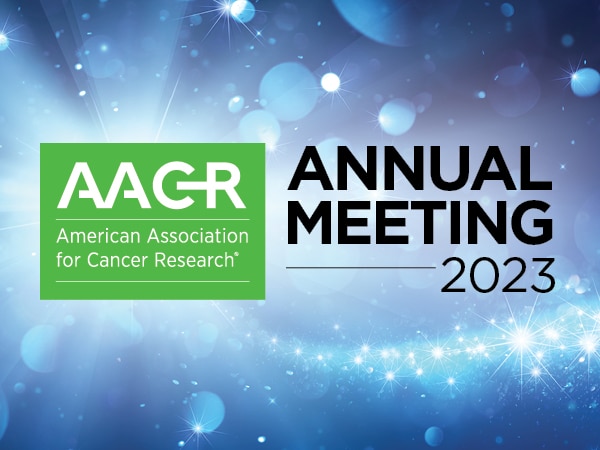Integrating Chemistry Into Cancer Research
Advances against cancer that make it to the clinic are a result of many years of hard work by researchers in myriad scientific fields, including non-biological disciplines such as chemistry. The more researchers in these different disciplines collaborate, the faster we will develop new and better approaches to cancer prevention, detection, diagnosis, and treatment.
Recognizing the important role that researchers working in the field of chemistry have to play in accelerating the pace of progress against cancer, the American Association for Cancer Research (AACR) established the Chemistry in Cancer Research Working Group (CICR), which is celebrating its 10th anniversary this year.
Communication is pivotal for the CICR to achieve its mission of promoting the future success of cancer research and the AACR through the scholarly exchange of chemistry-related information and open dialogue within the community of researchers that utilize chemical sciences and technologies in accomplishing their objectives. One vehicle for communication is the quarterly newsletter to CICR members. Others are the educational sessions that the CICR has organized at the AACR Annual Meeting 2015 and the CICR Town Hall, also at the Annual Meeting.

(L-R) CICR Past-chairperson Michael J. Luzzio, PhD, Chairperson Stephen A. Munk, PhD, and Chairperson-elect David E. Uehling, PhD, speak during the CICR Town Hall at the AACR Annual Meeting 2014 in San Diego.
The focus of February’s edition of the CICR newsletter was antibody-drug conjugates (ADCs), which are an emerging class of precision cancer medicines. At present, there are two anticancer ADCs approved by the U.S. Food and Drug Administration: brentuximab vedotin (Adcetris), which was approved for treating certain patients with Hodgkin lymphoma and some with systemic anaplastic large cell lymphoma in 2011, and ado-trastuzumab emtansine (Kadcyla), which was approved for the treatment of HER2-positive, metastatic breast cancer in 2013.
ADCs comprise a small-molecule cytotoxic drug attached to a cancer-specific antibody. As explained in the “From the Editors” section of the February CICR Newsletter, the therapeutic promise of ADCs stems in part from the fact that when small-molecule cytotoxic drugs, such as auristatins, maytansines, calicheamicins, and duocarmycins, are tethered to tumor-selective antibodies, their off-target effects are significantly reduced, providing a route to clinical progression of these cytotoxics that are often potent even at pico- to femtomolar quantities. Also highlighted is that the technologies behind the ADC concept need further improvements in order to more broadly offer cancer patients ADC-based personalized medicine.
But ADCs are just one way that researchers working in the field of chemistry can help offer new innovative solutions to developing new and better ways to prevent, detect, diagnose, and treat cancer. We look forward to learning about some of the fruits of their labor at the AACR Annual Meeting 2015, particularly during the two New Drugs on the Horizon special sessions, which will include the first disclosures of numerous new chemical entities.



